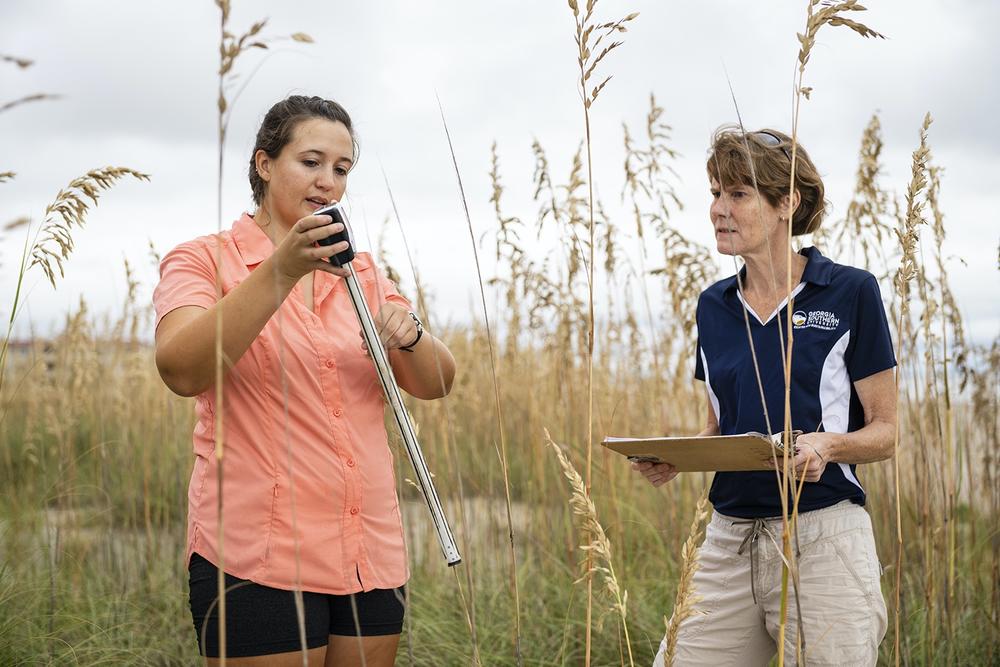
Caption
Georgia Southern graduate student Shannon Matzke (left) and her adviser Lissa Leege collect data for Matzke's sand dune restoration project.
Credit: Georgia Southern University

Georgia Southern graduate student Shannon Matzke (left) and her adviser Lissa Leege collect data for Matzke's sand dune restoration project.
A researcher on the Georgia coast is studying how plants help keep sand dunes in place to protect against damage from storms.
It’s well-established that roots help stabilize dunes, but Georgia Southern graduate student Shannon Matzke is studying the effectiveness of different species and planting methods.
She said in addition to holding dunes in place below ground, the plants and dunes help each other grow.
“These plants are also stimulated by burial, so instead of getting buried by sand and dying, a lot of these species will continue to grow taller," she said. "So they’re taller, and so they can trap more sand.”
Matzke's research is part of a broader effort to build up and secure Tybee Island’s dunes after flooding from hurricanes Matthew and Irma, with the goal of protecting against the next storm.
"When water comes up from a storm surge, it can break through a dune," she said. "And so if there's any weak spots where there really aren't any plants, or the sand hasn't become stabilized, or maybe there's some sort of path or crossover for people, that's the perfect spot for water to rush in."
Stable, well-planted dunes can also help nesting sea turtles. Laying eggs in the higher elevation of the dune can help protect the nest from flooding, and plants can shield the nest from the view of predators.
Matzke has partnered with the city of Tybee Island to conduct her research, with funding from Georgia Southern, the University of Georgia Marine Extension and Georgia Sea Grant, and the Department of Natural Resources Coastal Resources Division Grant. The last, a Coastal Incentive Grant, also includes a program to try to continue the dune monitoring with local volunteers in the future.